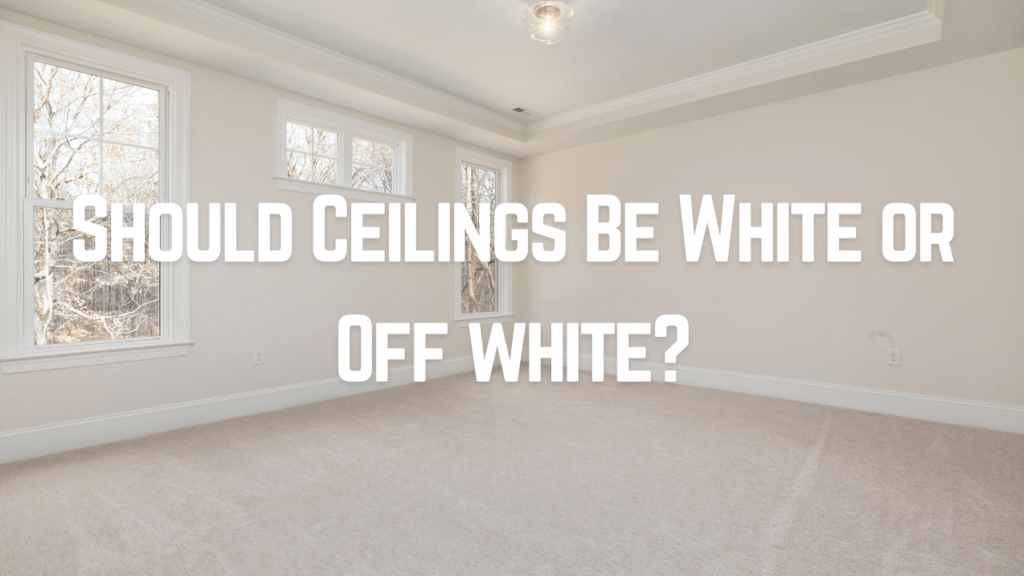
Should ceilings be white or off-white? When choosing the right color for ceilings, whether to go for white or off-white largely depends on your preference, the overall design scheme of the room, and the effect you want to achieve. Let’s delve into the considerations for both options:
Should Ceilings Be White or Off white?
White Ceilings
Classic and Bright: White ceilings are a classic choice to make a room feel bright, open, and airy. They reflect light well, making spaces appear larger.
Versatility: White ceilings work well with any wall color or decor style. This versatility can be especially helpful if you plan to frequently change the look of your rooms.
Clean and Crisp: White ceilings create a clean and crisp look. They are excellent for modern, minimalist, or Scandinavian design aesthetics.
Historical Preference: Many traditional and historical homes feature white ceilings as it was a common practice in the past.
Off-White Ceilings
Warmth and Coziness: Off-white or cream-colored ceilings can add warmth and coziness to a room. They create a softer, more inviting ambiance.
Reduced Glare: While still reflecting light, off-white shades can be less glaring than pure white. This can be beneficial in rooms with a lot of natural light or where glare is a concern.
Complementary Tones: Off-white shades can be chosen to complement the wall color, creating a harmonious color scheme. This is particularly useful if you have a specific color palette in mind.
Vintage or Vintage-inspired: Off-white ceilings can evoke a vintage or vintage-inspired vibe, which can be perfect for certain interior design themes.

In conclusion, there is no strict rule that dictates whether ceilings should be white or off-white. It’s ultimately a matter of personal preference and the mood you want to create in your space. Consider the room’s lighting, the colors of your walls and furnishings, and your design goals when making this decision. You can also test paint samples on a small ceiling area to see how they look in your specific lighting conditions. Remember, there’s no one-size-fits-all answer, so choose the best option with your vision for the room.
